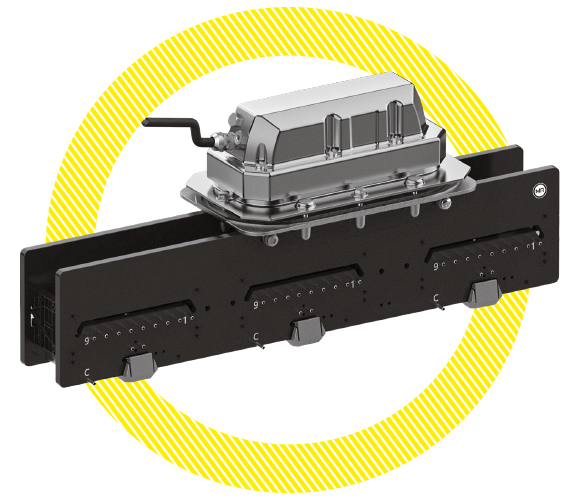The world’s smallest high-speed resistance tap changer for voltage regulation distribution transformers has two huge talents for the energy transition.
TALENT 1
Expanding networks quickly and cost-effectively
The higher the share of renewable energies fed into the grid, the higher the degree of necessary grid expansion. This is because with a lot of wind and solar power, voltage fluctuations in the distribution network increase sharply.
Each country has different tolerances for voltage fluctuations. These vary from plus/minus five to ten percent. Guaranteeing these tolerances is becoming more difficult for grid operators as the share of renewables increases. The solution: grid expansion. But there are two approaches to this. First, the complex and cost-intensive expansion with thicker lines and more local network stations. Second, the more cost-effective, flexible expansion using voltage regulation distribution transformers, so-called VRDTs. With the latter, the final control point moves from the substation to the local network station which makes it easier to keep the voltage stable, because the grid gets more intermediate control points that regulate close to the source. For such approaches, the ECOTAP® VPD® on-load tap-changer can be integrated into existing transformer designs with little effort—no new lines or buildings are required. Replacing an existing unregulated local transformer with a regulatable one takes about one day. A complete line upgrade would take months.
Increased capacities
However, ECOTAP® VPD® not only favors the energy turnaround through its increased absorption capacity for renewable generators in the distribution grid. With the triumphant advance of electromobility, the load-side demands on the grids will also increase massively. In this case, too, grid operators will benefit from the increased absorption capacity of the grids due to the VRDT.

TALENT 2
Ten percent more power from wind and solar
Wind turbine or open-space photovoltaic power plants require local converters that convert DC voltage into AC voltage for grid feeding. The performance of a converter is defined by the amount of maximum current and the applied grid voltage. Since the voltage can fluctuate, manufacturers of wind and PV systems must base the performance on a voltage value. Usually, this is the nominal voltage value or less—but never the voltage optimum. This is why the apparent power that an inverter can provide is largely dependent on grid fluctuations. This can lead to the situation that in operation the fed-in active power—and only this is usually paid for! — is lower than what the energy source would provide in the case of strong wind or strong solar radiation. Unwanted active power reductions can have another cause such as when the grid voltage fluctuates and the reactive power demand of the grid turns out to be so high that, together with the active power provided, it exceeds the apparent power capacity of the inverter. Until now, in such cases one could either throttle the valuable active power or provide costly but mostly unused reserve converter power and reactive power sources.
Inverter transformers
The cheaper solution to get everything out of the plants is to replace the transformers on the inverters with regulated transformers. They regulate the voltage so that it is optimal for the inverter and ensure that the maximum active power can be fed in at every operating point. The result: up to ten percent more usable power from wind and PV—according to plan and certifiable. With the ECOTAP® VPD® mini on-load tap-changer, the basic design of VRDTs can remain unchanged. This is an advantage for wind power plants, for example, where the transformer sits directly in the nacelle. and volume and weight play a central role. Other energy-transition plants with converters also benefit from the power boost provided by low-cost, controllable transformers: for example, urgently needed battery storage systems or electrolyzers for hydrogen production.
YOUR CONTACT
 Do you have any questions about the project?
Do you have any questions about the project?
Franco Pizzutto is there for you:
F.Pizzutto@reinhausen.com
